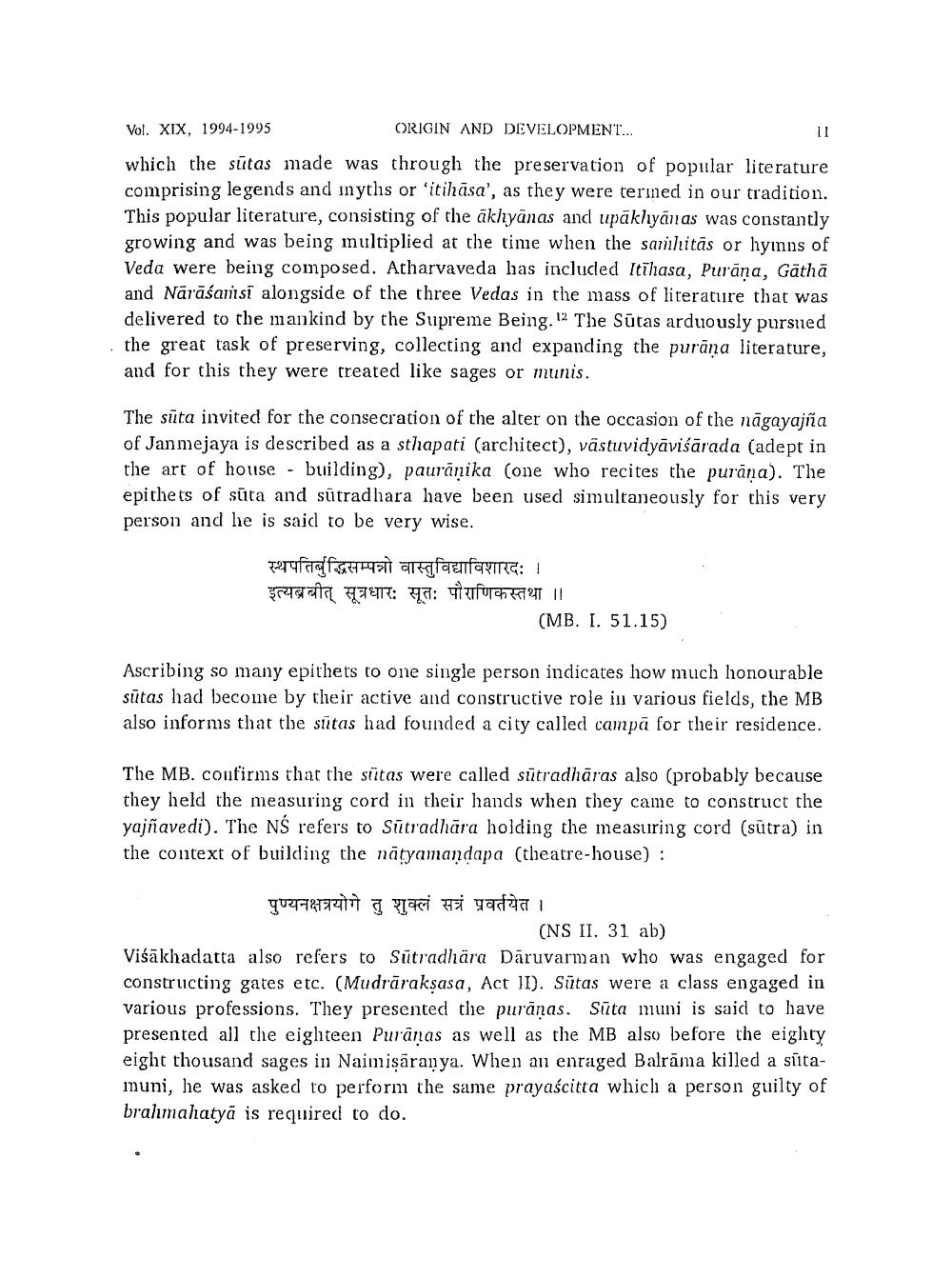________________
Vol. XIX, 1994-1995
ORIGIN AND DEVELOPMENT... which the sūtas made was through the preservation of popular literature comprising legends and inyths or 'itihāsa', as they were termed in our tradition. This popular literature, consisting of the ākhyānas and upāklıyan as was constantly growing and was being multiplied at the time when the sanhitās or hymns of Veda were being composed. Atharvaveda las included Itīlasa, Purāna, Gāthā and Nārāśansi alongside of the three Vedas in the mass of literature that was delivered to the mankind by the Supreme Being. 12 The Sūtas arduously pursued the great task of preserving, collecting and expanding the purāna literature, and for this they were treated like sages or munis.
The sūta invited for the consecration of the alter on the occasion of the nāgayajña of Jan mejaya is described as a sthapati (architect), västuvidyāvisārada (adept in the art of house - building), paurānika (one who recites the purāna). The epithets of sūta and sutradhara have been used simultaneously for this very person and he is said to be very wise.
स्थपतिर्बुद्धिसम्पन्नो वास्तुविद्याविशारदः । इत्यब्र बीत् सूत्रधारः सूतः पौराणिकस्तथा ।।
(MB. I. 51.15)
Ascribing so many epithets to one single person indicates how much honourable sūtas had become by their active and constructive role in various fields, the MB also informs that the stītas had founded a city called campā for their residence.
The MB. confirms that the sūtas were called stradhāras also (probably because they held the measuring cord in their hands when they came to construct the yajñavedi). The NŚ refers to Sūtradhāra holding the measuring cord (sutra) in the context of building the nātyamandapa (theatre-house) :
पुण्यनक्षत्रयोगे तु शुक्लं सत्रं प्रवर्तयेत ।
(NS II. 31 ab) Viśākhadatta also refers to Sutradhära Dāruvarman who was engaged for constructing gates etc. (Mudrāraksasa, Act II). Sūtas were a class engaged in various professions. They presented the purānas. Sūta muni is said to have presented all the eighteen Purānas as well as the MB also before the eighty eight thousand sages in Naimişāranya. When an enraged Balrāma killed a sītamuni, he was asked to perform the same prayascitta which a person guilty of brahmalatyā is required to do.




